ENERGY EFFICIENCY MANUAL
by Donald R. Wulfinghoff
List of Measures and Reference Notes
Section 1: BOILER PLANT
Subsection 1.1: EQUIPMENT SCHEDULING AND OPERATING PRACTICES
1.1.1 Minimize the duration of boiler plant operation.
1.1.1.1 For applications with regular schedules, install clock controls to start and stop boilers.
1.1.1.2 In applications that require a warm-up period, control boiler operation using
an optimum-start controller.
1.1.1.3 If the boiler plant is used only for comfort heating, limit the operation of the boiler plant
based on the outside air temperature.
1.1.1.4 In applications where automatic starting and stopping of boilers is not desirable,
use automatic controls to signal the starting and shutdown sequence to operators.
1.1.2 With multi-fuel boilers, select the most economical fuel on a moment-to-moment basis.
1.1.2.1 Install automatic fuel changeover.
1.1.3 Operate boiler auxiliary equipment consistent with boiler operation and load.
1.1.3.1 Interlock auxiliary equipment with the boilers it serves.
1.1.3.2 Install power switching that prevents unnecessary operation of spare pumps.
1.1.4 Distribute the heating load among boilers in the manner that minimizes total plant operating cost.
1.1.4.1 Install an automatic boiler scheduling controller.
1.1.5 In steam systems, keep steam pressure at the minimum that satisfies equipment
and distribution requirements.
Subsection 1.2: BOILER PLANT EFFICIENCY MEASUREMENT
1.2.1 Test boiler efficiency on a continuing basis.
1.2.2 Install efficiency instrumentation appropriate for the boiler plant.
1.2.3 Calibrate boiler plant instruments at appropriate intervals.
1.2.4 Keep operators proficient in using instrumentation to maximize boiler plant efficiency.
Subsection 1.3: AIR-FUEL RATIO
1.3.1 Optimize the air-fuel ratio.
1.3.2 Install automatic air-fuel mixture controls.
1.3.3 Adjust and repair air-fuel ratio controls.
Subsection 1.4: BURNER AND FAN SYSTEMS
1.4.1 Clean, adjust, and repair burner assemblies at appropriate intervals.
1.4.2 Eliminate air leaks in air casings, blower housings, and connecting ducts.
1.4.3 In boilers that are fired at inefficiently high output, reduce the maximum firing rate.
1.4.4 Install burner systems that provide the best efficiency and other features.
1.4.5 Replace the motors in burners and fans with models having the highest economical efficiency.
1.4.6 Replace continuous pilot flames with electrical ignition.
1.4.7 Install variable-output fan drives on large forced-draft and induced-draft fans.
Subsection 1.5: DRAFT CONTROL
1.5.1 Adjust draft for maximum efficiency.
1.5.2 Correct defects in flue systems and boiler room ventilation that cause draft problems.
1.5.3 Minimize standby losses.
1.5.3.1 Control all fans in the combustion air path to stop, and all dampers to close,
when the burner is not firing.
1.5.3.2 Install an automatic flue damper.
1.5.3.3 Install a burner assembly or boiler that minimizes standby losses.
1.5.3.4 With cycling burners, adjust the controls to minimize the frequency of firing cycles.
Subsection 1.6: FIRESIDES AND WATERSIDES
1.6.1 Clean firesides at appropriate intervals.
1.6.2 Install soot blowers in boilers that burn sooting fuels.
1.6.3 Optimize soot blower operation.
1.6.4 Clean watersides at appropriate intervals.
1.6.5 Avoid leaving waterside deposits when deactivating boilers.
Subsection 1.7: COMBUSTION GAS HEAT TRANSFER AND HEAT RECOVERY
1.7.1 Install a flue gas heat exchanger to recover additional heat.
1.7.1.1 Install a conventional (non-condensing) economizer.
1.7.1.2 Install a heat recovery air preheater.
1.7.1.3 Install a condensing economizer.
1.7.1.4 Install a water spray heat recovery unit.
1.7.2 In firetube boilers, install turbulators.
Subsection 1.8: CONDENSATE, FEEDWATER, AND WATER TREATMENT
1.8.1 Test and treat boiler water on a continuing basis.
1.8.1.1 Hire a qualified consultant and contractor to perform water treatment.
1.8.1.2 Install automatic water treatment equipment.
1.8.2 Control top and bottom blowdown to maintain required water quality and minimize waste
of boiler water.
1.8.2.1 Install automatic blowdown control.
1.8.3 Install blowdown heat recovery.
1.8.4 Maximize condensate return.
1.8.4.1 Recover the heat from condensate that must be discarded.
1.8.4.2 Recover the energy of high-temperature condensate that would be lost by flashing.
1.8.5 Keep vacuum condensate systems operating properly.
1.8.6 Replace pump motors with models having the highest economical efficiency.
Subsection 1.9: FUEL OIL SYSTEMS
1.9.1 Adjust fuel oil temperature to provide the optimum viscosity for burner efficiency.
1.9.1.1 Install automatic fuel oil viscosity control equipment.
1.9.2 Use the most economical heat source for fuel oil heating.
1.9.3 Use fuel oil additives to improve combustion efficiency and/or improve other fuel oil properties.
1.9.4 Replace pump motors with models having the highest economical efficiency.
Subsection 1.10: STEAM AND WATER LEAKAGE
1.10.1 Monitor boiler system water loss.
1.10.2 Locate and repair steam and water leaks at appropriate intervals.
1.10.3 Use the most efficient type of steam trap for each application.
1.10.4 Test and repair steam traps on a continuing basis.
1.10.4.1 Install accessory devices to assist in steam trap diagnosis.
1.10.4.2 Hire specialists to perform periodic steam trap inspections.
1.10.5 Recover heat and water from steam vents.
Subsection 1.11: CONDUCTION AND RADIATION LOSSES
1.11.1 Locate and repair defective insulation on all heating plant equipment and piping.
1.11.2 Minimize cooling or ventilation of pipe tunnels and other unoccupied spaces
surrounding hot distribution equipment.
1.11.3 Route combustion air to the boiler by a path that recovers heat from the boiler room.
Subsection 1.12: SYSTEM DESIGN FOR EFFICIENT LOW-LOAD HEATING
1.12.1 In facilities that operate for extended periods with low heating loads,
install a small, efficient lead boiler.
1.12.2 Install localized heating units to allow shutting down the central plant
during periods of low load.
1.12.3 If it is desirable to reduce the boiler operating pressure, eliminate high-pressure steam users or
provide separate high- pressure steam boilers.
1.12.4 If a facility has several boiler plants, provide cross connections that allow shutting down the
least efficient boilers.
نمایش نتایج: از 1 به 4 از 4
Hybrid View
-
- تاریخ عضویت
- 2011/06/03
- نوشته ها
- 630
- پسندیده
- 29
- مورد پسند : 25 بار در 16 پست
- نوشته های وبلاگ
- 243
- میزان امتیاز
- 0



اطلاعات موضوع
کاربرانی که در حال مشاهده این موضوع هستند
در حال حاضر 1 کاربر در حال مشاهده این موضوع است. (0 کاربران و 1 مهمان ها)
موضوعات مشابه
-
Iran Dena Machinery Manual Final Draft
توسط hossein-khazaeii در انجمن کتب تخصصی مکانیک و تاسیساتپاسخ: 0آخرين نوشته: 2012/06/10, 18:46 -
نمونه سوالات چهارگزينه اي مربوط به فصل دوم كتاب تاسيسات بهداشتي سال دوم هنرستان
توسط mehdizadeh در انجمن مراکز آموزشی مکانیک و تاسیساتپاسخ: 2آخرين نوشته: 2012/04/13, 17:43 -
ASHRAE Submits Comments on DOE Draft Energy & Water Efficiency Guidance for Federal
توسط meybotyhvac در انجمن تازه ها و خواندنی هاپاسخ: 0آخرين نوشته: 2011/06/26, 10:27 -
Ballanco: A Plumbing Code Design Manual You Need
توسط norasteh در انجمن نگهداری و تعمیراتپاسخ: 0آخرين نوشته: 2011/06/26, 10:18 -
Ballanco: A Plumbing Code Design Manual You Need
توسط norasteh در انجمن نگهداری و تعمیراتپاسخ: 0آخرين نوشته: 2011/06/23, 15:09
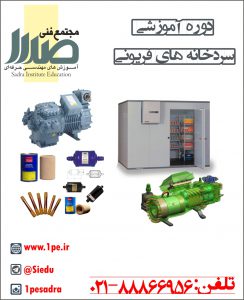
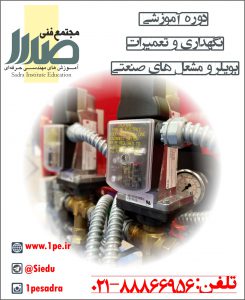
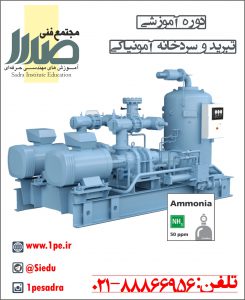
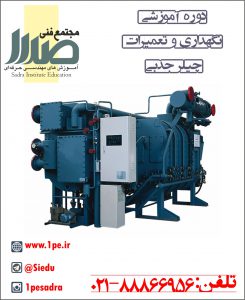

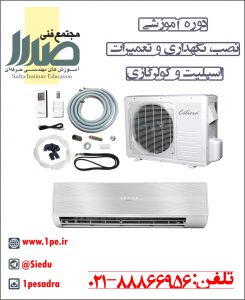




 پاسخ با نقل قول
پاسخ با نقل قول
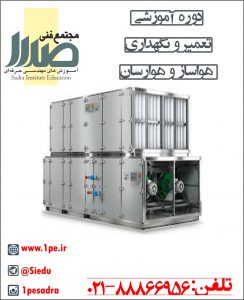
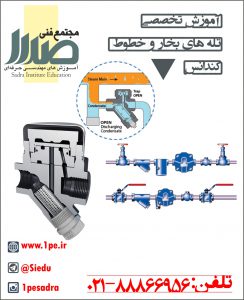

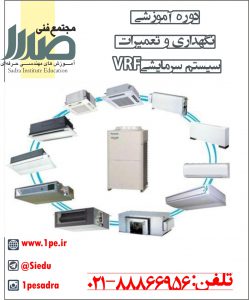

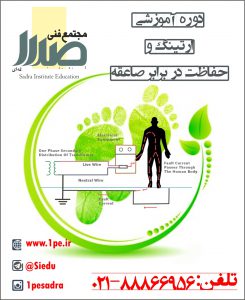
علاقه مندي ها (Bookmarks)